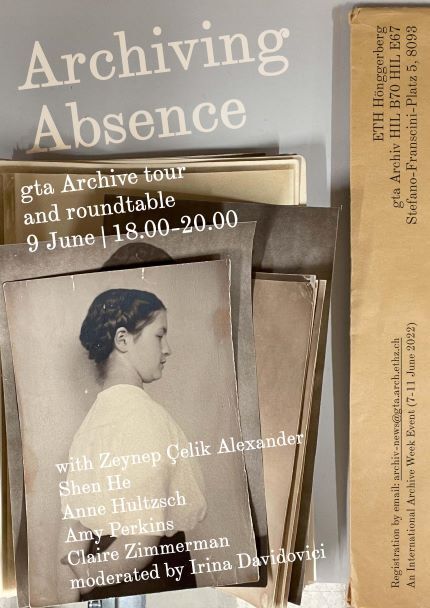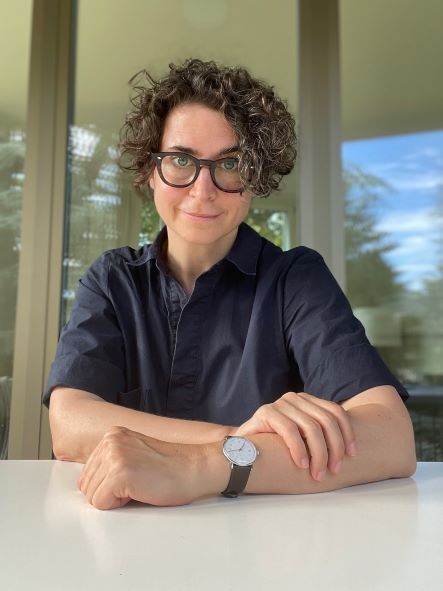Archiving Absence
A public event at the gta Archives, ETH Zurich ponders the repositioning of the architecture archive to new updated standards of parity, diversity, and social justice.

Out of 300 architects’ bequests currently in hold at the gta Archives, about ten are from women, of which half are tied into the bequests of their husbands.1
There are also the partial archives of art historian Carola Giedion-Welcker, artistst Libby Raynham and Eva Pauli, photographers Yolande Custer und Grete Hubacher. Still, the gta Archives, as many others, is predominantly based on the architectural output of established practitioners with important buildings and publications to their portfolio. And the overwhelming majority of these have been white men. Factually, the profession has marginalised women for many decades, and some of the most important Swiss women protagonists do not even have an archive. The issue of gender disparity is perhaps the most obvious, but when it comes to racial or social diversity, the archive has seemingly even less to show among its records. History is full of holes: too much material is missing and beyond recovery. How, then, can the archive begin to salvage these regrettable absences – not only prospectively, but also retrospectively? How do we archive absence itself?
Tour and Roundtable
This questioning has provoked the gta Archives team, when asked to consider a public tour on the theme 'Archive for all', to invert the vector of the theme. Instead of asking how more (and more diverse) groups of people may access and consult the materials of the archive, we have asked which, and whose, materials gain their place in this privileged site for the collection and preservation of evidence. Who, in other words, will be written into future, alternative, or expanded histories of architecture? This occasion has challenged us to directly address the issue of the hidden, overlooked, and lost collections, and to highlight items of our holding that can begin to redress the historical imbalance. To this end, the archival tour, organised by Daniel Weiss and Almut Grunewald, has highlighted four themes:
- the acknowledged, if sometimes blurred, input of women architects in joint practices, often with their husbands;
- the consideration of other media besides conventional modes of architectural representation (drawings, photographs), considering at the evidence contained in grey literature, correspondence, ephemera, and film;
- the investigation of colonial and postcolonial entanglements in the work of Swiss architects, including the elusive traces of refugees, exiles, stories of aid and reconstruction;
- ephemeral traces of other actors of architectural practice, for example students and collaborators in the collections of their teachers and employers.
The tour was followed by a roundtable discussion organised by the gta Archive and moderated by Tom Avermaete, the Director of the gta Institute. Among the guests were established scholars with extensive archival research experience – Zeynep Celik-Alexander, Claire Zimmerman, Anne Hultzsch – as well as activist architects Amy Perkins and Shen He, representatives of the Parity and Diversity Commission at the Architecture Department and founders of the online Fluid Archive, a bottom-up initiative for the preservation of knowledge related to diversity and social justice. The discussion focused on the architecture archive as inevitably a privileged, selective, and curated store for historical evidence. When passively taking over pre-sorted collections, the archive inevitably takes over the concerns and morals of a specific time. The historicity of the collections is itself a layer of knowledge to be valued and preserved.
Conclusion
Archival collections can never either complete, or fully objective. Not all of the stories in the writing of history can ever be recovered. And this is where a second member of the equation, the subject to which the archive is the object, comes into play: the researcher, in our case, the historian. The task of the historian is to process the raw materials at her disposal by selecting the significant ones and placing them into a structure of interpretation – an inevitably subjective process. Increasingly, research has involved going beyond the evidence found in the archive, and using a variety of different de-centring strategies in order to identify and redistribute authorships and agencies. Only a few were mentioned: reading between the lines, or against the grain, of archival documents; confronting the facts represented in the archive with supplementary evidence, including from other disciplinary fields; performative practices of reconstruction; the creative use of new technological tools. US scholar Zeynep Celik-Alexander noted that archive is a resource only inasmuch as its materials can be used.2 Just as natural resources only become resources at the point where they can be extracted, the archive is itself a resource that can only be fully valorised at the point of its indexing. Only when the archive’s materials have become traceable and recoverable, can they become, through scholarship, part of new, alternative, and expanded histories.
- 1 [1]Lux Guyer, Flora Steiger-Crawford (Nachlass Rudolf Steiger and Flora Steiger-Crawford), Lisbeth Sachs, Trix Haussmann (Nachlass Trix and Robert Haussmann), Grete Hubacher-Knokke (separate from Nachlass of her husband Carl Hubacher), Annemarie Hubacher-Constam (Nachlass Hans-Otto Hubacher and Annemarie Hubacher-Constam), Elsa Burckhardt-Blum (Nachlass Elsa Burckhardt-Blum and Ernst Friedrich Burckhard), Marianne Burckhalter (Nachlass Burckhalter Sumi Architekten).
- 2 [2]The public tour and roundtable discussion ‘Archiving Absence’ took place on 9 June 2022 at the gta Archives, ETH Zurich, as part of the International Archive Week in collaboration with ETH Collections and Archives. Organised by the gta Archives (Irina Davidovici, Daniel Weiss, Almut Grunewald). The following roundtable with Zeynep Çelik Alexander, Shen He, Anne Hultzsch, Amy Perkins, and Claire Zimmerman was moderated by Tom Avermaete.
Résumé
- English
- Deutsch
- Français
This paper provides a condensed report of the public tour and panel discussion Archiving Absence, conducted at the gta Archives at ETH Zurich on 9 June 2022. It discusses the challenges of the architecture archive in redressing historical imbalances and providing evidence for corrective and inclusive histories, while preserving the historicity of its collections.
Der Beitrag enthält einen zusammengefassten Bericht über die öffentliche Führung und die Podiumsdiskussion Archiving Absence, die am 9. Juni 2022 im gta-Archiv der ETH Zürich stattfand. Er erörtert die Herausforderungen des Architekturarchivs beim Ausgleich historischer Ungleichgewichte und bei der Bereitstellung von Belegen für korrigierende und integrative Geschichten, während gleichzeitig die Historizität der Sammlungen bewahrt wird.
Cet article présente un retour sur la visite publique et la table ronde Archiving Absence, organisées aux Archives de l'Institut d'histoire et de théorie de l'architecture (gta) de l'École polytechnique fédérale de Zurich (ETH Zürich) le 9 juin 2022. Il aborde les défis des archives d'architecture pour redresser les déséquilibres historiques et fournir des preuves pour des histoires correctives et inclusives, tout en préservant l'historicité de ses collections.

